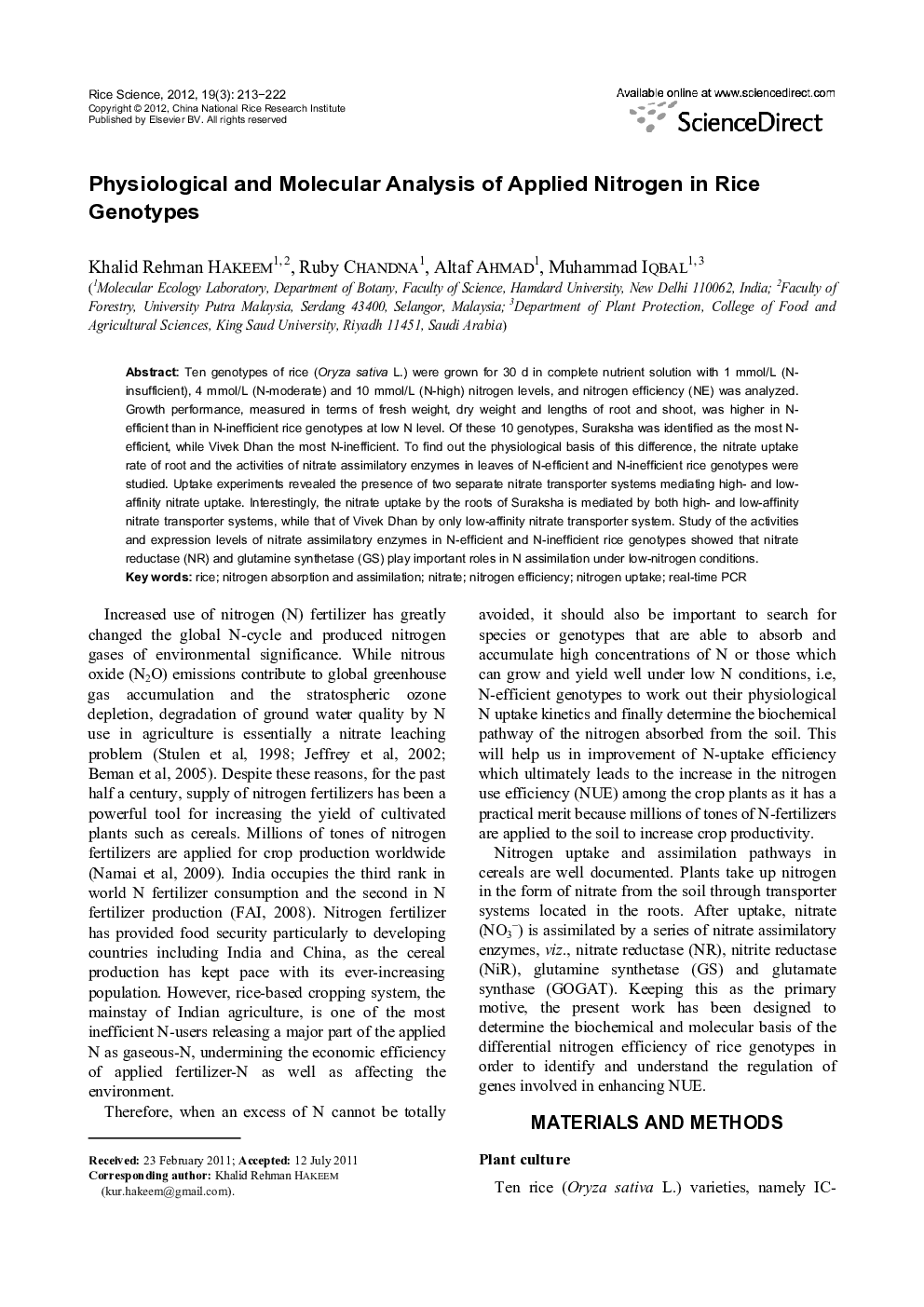| Article ID | Journal | Published Year | Pages | File Type |
|---|---|---|---|---|
| 4502045 | Rice Science | 2012 | 10 Pages |
Ten genotypes of rice (Oryza sativa L.) were grown for 30 d in complete nutrient solution with 1 mmol/L (N-insufficient), 4 mmol/L (N-moderate) and 10 mmol/L (N-high) nitrogen levels, and nitrogen efficiency (NE) was analyzed. Growth performance, measured in terms of fresh weight, dry weight and lengths of root and shoot, was higher in N-efficient than in N-inefficient rice genotypes at low N level. Of these 10 genotypes, Suraksha was identified as the most N-efficient, while Vivek Dhan the most N-inefficient. To find out the physiological basis of this difference, the nitrate uptake rate of root and the activities of nitrate assimilatory enzymes in leaves of N-efficient and N-inefficient rice genotypes were studied. Uptake experiments revealed the presence of two separate nitrate transporter systems mediating high- and low-affinity nitrate uptake. Interestingly, the nitrate uptake by the roots of Suraksha is mediated by both high- and low-affinity nitrate transporter systems, while that of Vivek Dhan by only low-affinity nitrate transporter system. Study of the activities and expression levels of nitrate assimilatory enzymes in N-efficient and N-inefficient rice genotypes showed that nitrate reductase (NR) and glutamine synthetase (GS) play important roles in N assimilation under low-nitrogen conditions.
